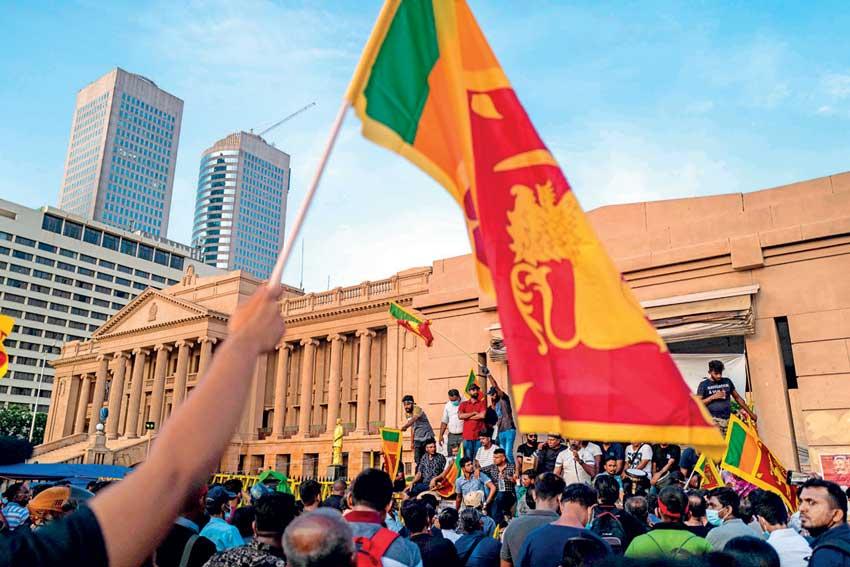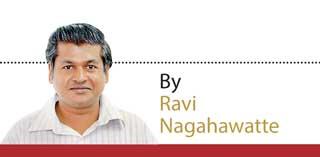Reply To:
Name - Reply Comment

Sri Lanka has much to learn from the Philippines where public agitations and peaceful protests are concerned (Picture AFP)
In recent times, the better known priests have sided with the Rajapaksa family and the lawmakers wielding political power and ignored the pleas of the common people
During Corazon’s tenure as president of Philippines-despite those who rallied in favour of democracy-the Catholic church didn’t get involved in Philippine politics
 At a time when Sri Lankans are fighting for democracy and fair play by the government its citizens in general can draw inspiration from former President of the Philippines Corazon Aquino.
At a time when Sri Lankans are fighting for democracy and fair play by the government its citizens in general can draw inspiration from former President of the Philippines Corazon Aquino.
The Philippines like Sri Lanka experienced the ugly side of dictatorship and perhaps the worst period of such rule was during the reign of Ferdinand Marcos. This president was in charge of the country when Corazon’s husband, Benigno, was gunned down at the airport; all for political reasons.
But soon the opposition rallied around Corazon and made her contest the 1986 presidential elections which saw Marcos finally accepting defeat in a rigged election. The Philippines saw good times afterwards; at least from a democratic perspective. Sri Lanka, like the Philippines, has experienced political turmoil where political families have been sent on the back foot due to assassinations of family members. The Bandaranaike family was the first-when it lost SWRD Bandaranaike- and then the popular and upcoming actor turned politician Vijaya Kumaratunga was gunned down when Sri Lanka was screaming for a change in a volatile and bloody political stage.
|
Corazon Aquino |
Vijaya’s wife Chandrika Bandaranaike Kumaratunga later became the president of the nation and Sri Lanka experienced a change from dictatorship, that reigned between 1989 -1993. Chandrika, like Corazon, saw the masses turning toward her for leadership aimed at ushering in a new political system that would be rid of corruption and highhanded political behaviour.
Asian countries are famous for violence in politics. Right now in Sri Lanka people have taken to the streets demanding the removal of this regime that’s hugely influenced by the Rajapaksa family. Apart from being unable to provide necessities like fuel and gas this government is also alleged to have engaged in shaky financial dealings. On Tuesday Sri Lankan protesters saw its first civilian casualty when police opened fire on a group of protesters agitating in Rambukkana. The reason behind their agitation was related to the fuel price hike and its shortage in the market. But despite the government doing its utmost to keep the fuel stations supplied with some fuel the greater demand of the people is to see the back of the 225 lawmakers who served parliament.
In another comparison of times in the Philippines and Sri Lanka the latter is engaging in a peaceful protest; just like how Corazon wanted it back then in 1986. But there are differences which need to be studied closely. When Corazon was receiving the backing of the people she wanted the protests to be coupled with prayers. Praying was a big part of the revolution against corruption and dictatorship in the Philippines. After all she was a widower and a lady, hence she needed support and that pillar came in the form of religion; in Corazon’s case it being the Christian faith. But this religious factor, even at present, is not very significant in the present series of protests taking place in Sri Lanka. In the island nation priests, in the past, stood with the common people and even offered leadership to people during several rebellions against the British. However, in recent times, the better known priests have sided with the Rajapaksa family and the lawmakers wielding political power and ignored the pleas of the common people.
It must be said here that during Corazon’s tenure as president of Philippines-despite those who rallied in favour of democracy-the Catholic church didn’t get involved in Philippine politics. This is what the present generation of agitating youth also wishes to see in Sri Lanka; an absence of the clergy in political decision making.
In another comparison of times in the Philippines and Sri Lanka the latter is engaging in a peaceful protest; just like how Corazon wanted it back then in 1986. But there are differences which need to be studied closely. When Corazon was receiving the backing of the people she wanted the protests to be coupled with prayers.
At the time of writing people are of the opinion that the security forces are with the government; largely because the president of Sri Lanks is an ex-military man. The police on the other hand have maintained a somewhat neutral stand. There was even one occasion where one police officer came out in public-while on duty- and stood on the side of the protesters agitating at Galle Face. If one recalls the political rallies in Asia-which were successful in causing regime changes- the security forces and the police had stood on the side of the protesters.
Corazon survived many coups (Seven) during her tenure as president, but above all from what she achieved for the people the voice for democracy stood the tallest. The rallies she initiated were known as ‘People Power’. After the first successful rally she came back to initiate the second when people wanted to see the back of another horrible president in Joseph Estrada (2001). That campaign was termed ‘People Power 2’. At the end of all that Corazon was termed as the ‘Mother of Democracy in Asia’.
Sri Lankan protesters have gained ground rapidly even after the opposition failed to form the majority in parliament and topple the government. Several organizations seem to contribute to these agitations as shown by their representatives who appeared on ‘Derana’ Television on April 20 morning and aired their views regarding the struggle. There were representatives of at least four major groups that are agitating and calling for both a regime and system change.
Political analysts are predicting a fall of the Rajapaksa regime any time soon. But two of the major issues that need to be addressed are the issue of poverty and the less affluent waiting for someone to feed them. When Corazon was active in politics she too faced this situation, but she at least spelt out the solution. In an interview with the ‘Reader’s Digest’ of June, 2002 Corazon states that ‘Life cannot be a continuous dole-out; people themselves have to give of their hard work, energies and intellectual support to get out country to move’.
Sri Lanka has much to learn from the Philippines where public agitations and peaceful protests are concerned. That casualty at Rambukkana has to be the last setback because from the visuals that we saw on television the protesters were nowhere close to being peaceful.
With time this expected change in both the system and present regime will take place. But the life and times of Corazon tell us that even after democracy is established those power hungry corrupt officials can sneak in to the system again if vigilance on the political scene isn’t maintained.
Sri Lanka is a Buddhist majority nation where Buddha’s religion advises people to live in the present moment. But where checking on corrupt politicians creeping into the system is concerned citizens who love this nation must maintain eternal vigilance.